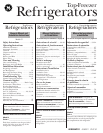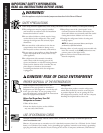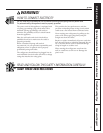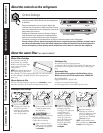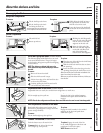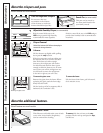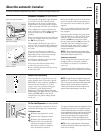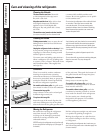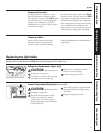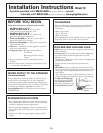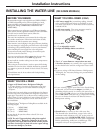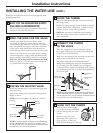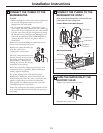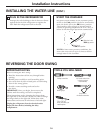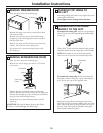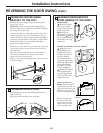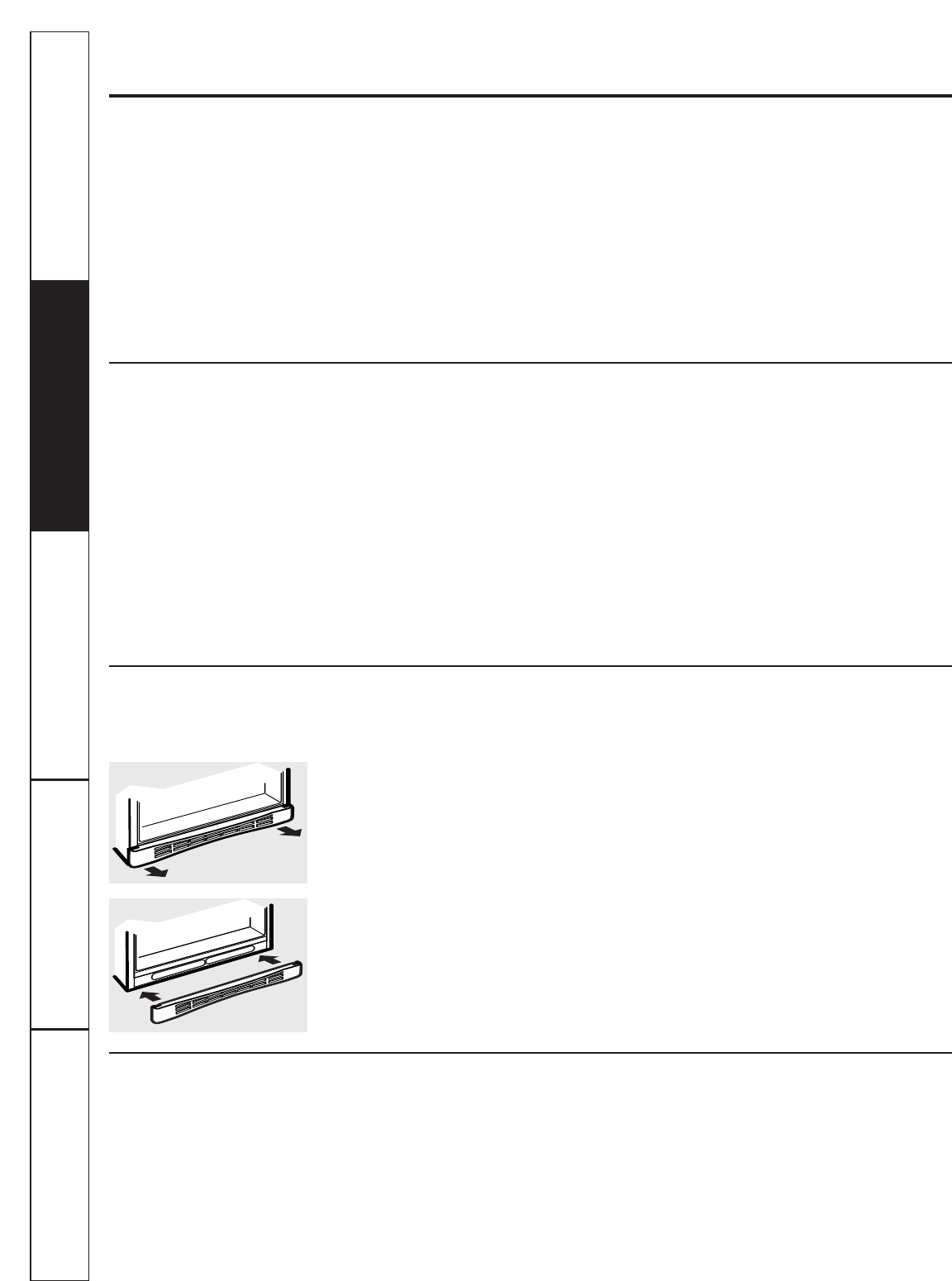
8
Consumer Support Troubleshooting Tips
Operating Instructions Safety InstructionsInstallation Instructions
Care and cleaning of the refrigerator.
Cleaning the Outside
The door handles and trim. Clean with
a cloth dampened with soapy water.
Dry with a soft cloth.
K
eep the outside clean.
W
ipe with a clean
cloth lightly dampened with kitchen
appliance wax or mild liquid dish
detergent. Dry and polish with a clean,
soft cloth.
The stainless steel panels and door handles
(on some models) can be cleaned with
a commercially available stainless steel
cleaner. Do not use appliance wax or polish
o
n the stainless steel.
Do not wipe the refrigerator with a soiled dish cloth
or wet towel. These may leave a residue that
can erode the paint. Do not use scouring pads,
powdered cleaners, bleach or cleaners containing
bleach because these products can scratch and
weaken the paint finish.
Cleaning the Inside
To help prevent odors, leave an open box of
baking soda in the fresh food and freezer
compartments.
Unplug the refrigerator before cleaning. If this
is not practical, wring excess moisture out
of sponge or cloth when cleaning around
switches, lights or controls.
Use warm water and baking soda solution—
about a tablespoon (15 ml) of baking soda
to a quart (1 liter) of water. This both cleans
and neutralizes odors. Thoroughly rinse
and wipe dry.
Avoid cleaning cold glass shelves (on some models)
with hot water because the extreme temperature
difference may cause them to break. Handle glass
shelves carefully. Bumping tempered glass can cause
it to shatter.
Do not wash any plastic refrigerator parts in the
dishwasher.
Do not clean with any products containing detergent,
bleach or ammonia. They may damage the
refrigerator.
Condenser
There is no need for routine condenser
cleanings in normal home operating
environments. However, in environments
that may be particularly dusty or greasy
, the
condenser should be cleaned periodically
for efficient refrigerator operation.
For models with a base grille, the grille must
be removed in order to clean the condenser.
T
o r
emove the base grille:
Grasp it about 6″ from each end and pull
its bottom edge toward you.
To replace the base grille:
Insert the tops of the metal clips into the
oval vents, making sure one of the plastic
tabs on the back of the grille goes into each
of the oval vents. Then push the bottom of
the grille forward until it snaps into place.
Cleaning the condenser:
Sweep away or vacuum up dust.
For models with a base grille, reach the
condenser by inserting a brush or vacuum
hose into the oval holes.
For models without a base grille, reach the
condenser by inserting a brush or vacuum
hose under the bottom of the refrigerator.
For best results, use a brush specially
designed for this purpose. It is available
at most appliance parts stores.
Moving the Refrigerator
Be careful when moving the refrigerator
away from the wall. All types of floor
coverings can be damaged, particularly
cushioned coverings and those with
embossed surfaces.
BEFORE moving the r
efrigerator away from the wall,
be sure to adjust the leveling legs up. (See page 10
for details.)
Pull the refrigerator straight out and return
it to position by pushing it straight in.
Moving the refrigerator in a side direction
may result in damage to the floor covering
or refrigerator.
When pushing the refrigerator back, make sure you
don’t roll over the power cord or icemaker supply line
(on some models).



